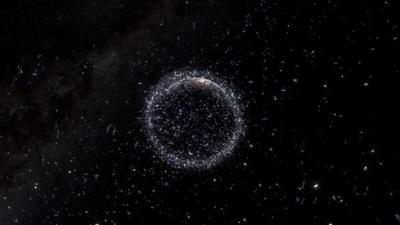Fri, Nov 26, 2021
“A Workable Strategy” for Eliminating Space Debris
An Embry-Riddle Aeronautical University professor and his co-inventors patented a workable, functional solution to the prevention of spaceborne debris accumulation. Named the Drag De-Orbit Device, or D3, the system is designed to guide small satellites out of Earth orbit into the atmosphere where they burn up in re-entry. The increased usage of private and commercial satellites, even smaller ones for cheap research experiments, presents an ongoing risk for all

orbital equipment. High-speed space flotsam can function similar to buckshot circling the globe, blocking off orbital stations or tracks from future use.
The inventor, Dr. Riccardo Bevilacqua, a professor of Aerospace Engineering at the university, saying “The D3 helps solve the problem of space debris by safely steering the atmospheric re-entry and demise of low-Earth orbit spacecraft.” His work piqued the interest of Orbotic Systems, a space debris specialist, and led to their licensing of his tech. “We are confident we will see the D3 attracting the attention of the private sector, given future plans on injecting thousands of small spacecraft into low orbits — for Earth observation, providing global internet and much more,” he said. “I would expect things to ramp up in the next five years or less.”

The D3 is a 10 by 10 by 5 centimeter system that mounts on the back of a satellite to connect with its flight control system. Using independently deployable and retractable booms, it can adjust its incoming trajectory while returning to earth, skimming the atmosphere so it can create a de-orbit track away from populated areas. It can double as a collision avoidance maneuvering system while in space, a bonus for satellite designers hoping for more control over their systems even after their deployment.
Bevilacqua and graduate student Nicolo Woodward will begin the integration of new electronics into the system in preparation for test flights beginning in late spring 2022.
More News
Its Offerings Are Lighter, Cleaner, and Now Pushing Past 1,000nm on SAF Jet Fuel DeltaHawk’s diesel-powered aircraft lineup has seen incredible upgrades over the last few yea>[...]
The Airplane Experienced A Total Loss Of Engine Power On December 3, 2025, about 1600 central standard time, a Mooney Aircraft Corp. M20K, N57229, was substantially damaged when it>[...]
Make Sure You NEVER Miss A New Story From Aero-News Network Do you ever feel like you never see posts from a certain person or page on Facebook or Instagram? Here’s how you c>[...]
Aero Linx: European Society of Aerospace Medicine (ESAM) As a pan-European, independent forum, it works to promote the safety and health of all persons involved in aviation and spa>[...]
“We are excited to see Wisk achieve this milestone, and I’m so proud of the team that made it possible. The team at Wisk has built advanced technologies across flight c>[...]
 Aero-TV: DeltaHawks Diesel Power Steps Into the Spotlight
Aero-TV: DeltaHawks Diesel Power Steps Into the Spotlight NTSB Prelim: Mooney Aircraft Corp. M20K
NTSB Prelim: Mooney Aircraft Corp. M20K ANN FAQ: Turn On Post Notifications
ANN FAQ: Turn On Post Notifications ANN's Daily Aero-Linx (12.20.25)
ANN's Daily Aero-Linx (12.20.25) Aero-News: Quote of the Day (12.20.25)
Aero-News: Quote of the Day (12.20.25)




